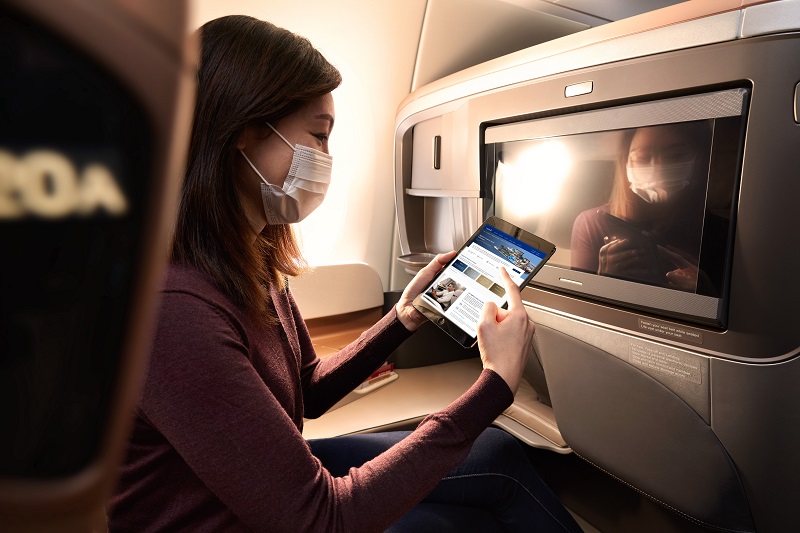Singapore Airlines is confident it can quickly open up passenger services to Australia but there are fears a failure to consult overseas airlines could result in an unmanageable international reopening.
The airline’s regional vice president, Louise Arul, says Singapore is still in the dark about issues such as vaccination of ground staff, how authorities plan to avoid airport bottlenecks and what requirements airlines and their passengers face.
This contrasts with the carrier’s experience at its home base of Changi Airport, where airline, airport and government officials spent months planning for the resumption of international travel.
READ: Post-COVID fares will be fair, says airlines chief.
Singapore (SIA) first expressed concerns about a lack of consultation in June and its worries have recently been echoed by other overseas carriers through their representative body, the Board of Airline Representatives of Australia.
The airline took a strategic decision to continue flying to Australia, helping almost 70,000 people travel to Australia on more than 3600 passenger flights since April last year.
It has imported almost 100,000 tonnes of cargo, including 4000 tonnes of medical supplies, as it operated more than 1100 “cargo only” passenger aircraft and nearly 1500 freighter flights as well as 224 flights under the government’s iFAM program.
It has also taken out thousands of tonnes of cargo ranging from perishables such as fruit, meat and lobsters to 9000 tonnes of general cargo.
Officials are surprised the government has not tapped its expertise in opening up routes during COVID, particularly its experience on the Singapore-Germany route and operations at Changi.
And while they welcome talk of an international COVID certificate, they say they need to see the details.
“In all this talk about border opening, there’s been a lot of hope and expectation and we think it is important for us to sit down with the authorities to discuss what actually is needed for a safe border opening,’’ Arul told AirlineRatings.
“For example, are all workers at the airport vaccinated? The airport is obviously a high-risk environment because you have passengers coming from overseas.
“But so far only two states have imposed regulations to make sure all airports are vaccinated and that’s Sydney and Adelaide.
“The other major international airports in Australia have not done so.
“So while SIA can make sure our own staff are vaccinated, we have no visibility of whether our partners at the airport, our ground handling agents and so on are fully vaccinated.
“So that is something that really needs to be looked at.”
Arul said the airline was also unclear how Australia would avoid bottlenecks at airports when the borders start to open or the likely requirements that will be imposed by authorities.
He said a key requirement on other routes flown by the airline had been a negative pre-departure test, even for people who were vaccinated.
Airlines needed to know there would sufficient capacity in Australia to perform the tests and they could be returned 48 hours or 72 hours before a flight.
They also needed to know where there would be red and green areas in airports for passengers arriving from countries with differing infection rates.
“Some flights may be red, some flights may be green and that essentially splits airport capacity in half,’’ Arul said.
“How much can an airport handle? We have no visibility of that.
“These questions all need to be answered.
“We would obviously like to avoid a start-stop situation. We don’t want to start one day and then find a few weeks later that things have become unmanageable and we have to cut down and stop so the result is disappointed passengers.
“So these are things we have to talk to the government about and clarify and make sure everyone is on the same page.”
Arul said the airline’s substantial operation in Australia meant it could “turn on the tap very quickly” in terms of increased passenger services.
SIA is currently running double daily services to Melbourne, Brisbane and Perth with a three times weekly service to Adelaide.
Its twice-daily services to Sydney have been reduced to one passenger flight due to the federal government’s decision to halve arrival caps from September 8.
“We don’t need to launch a flight, we just need to turn on the inventory once there is some indication of a model,’’ Arul said.
“All our crew are poised and ready because they’ve been operating for the last 18 months — we don’t need to send crew for refreshers and so on.”
On the question of fares, Arul said SIA had not seen a spike in those markets that had opened up.
He said most airlines had spare capacity they were able to bring in as demand picked up and that was certainly the case for Singapore Airlines.
“I doubt any airline will want to constrain capacity to increase fares because everyone is eager to get back on the road,’’ he said.
























